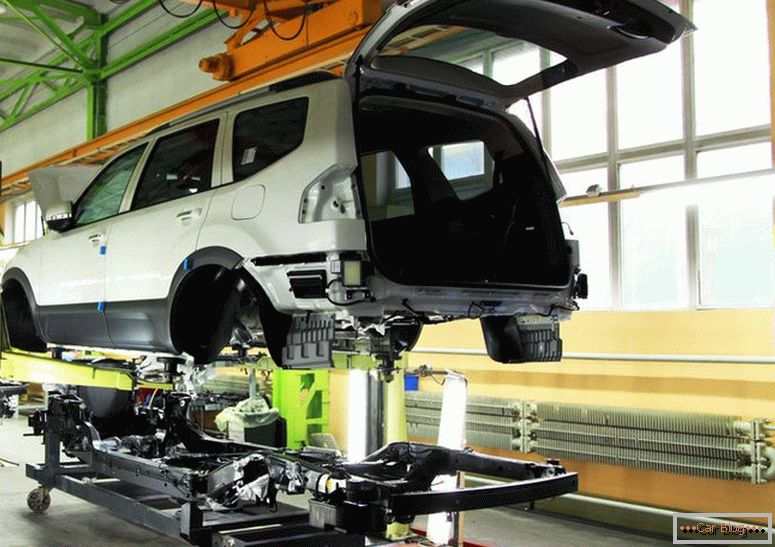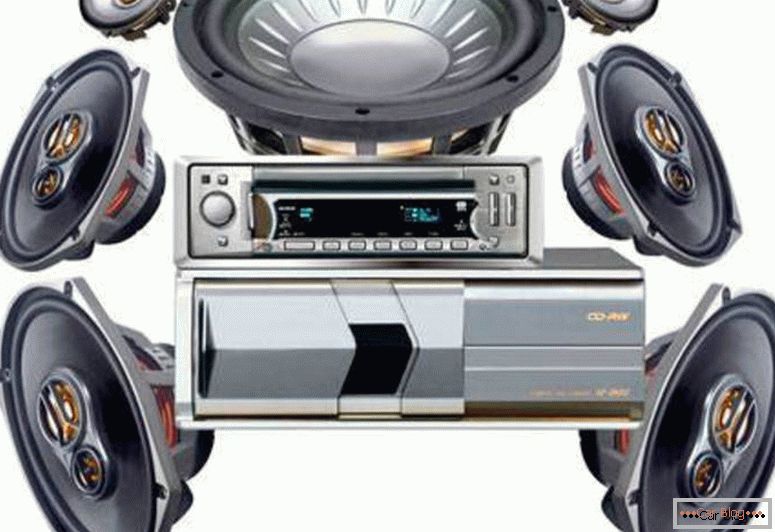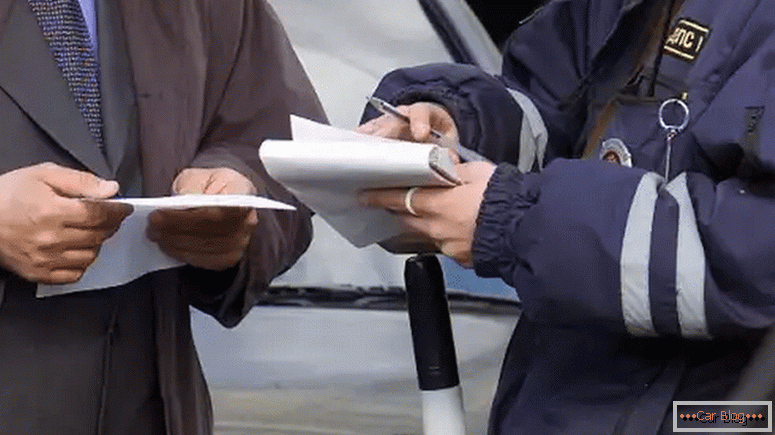>
Effective braking system - a pledge of safety on the roads. Drivers are crammed into this truth from the first lessons in the course of driving courses. But it so happened that paramount attention is paid to brake pads, literally all drivers know the need for timely replacement of which. But with regard to brake fluid, the majority of motorists are not even aware of the regular timing of its replacement. Meanwhile, their non-observance threatens no less trouble. However, any problems with the brakes are unacceptable. Unfortunately, we remember about brake fluid only when the brakes stop working with the same efficiency, or fail at all. And well, if it is not detected while driving.
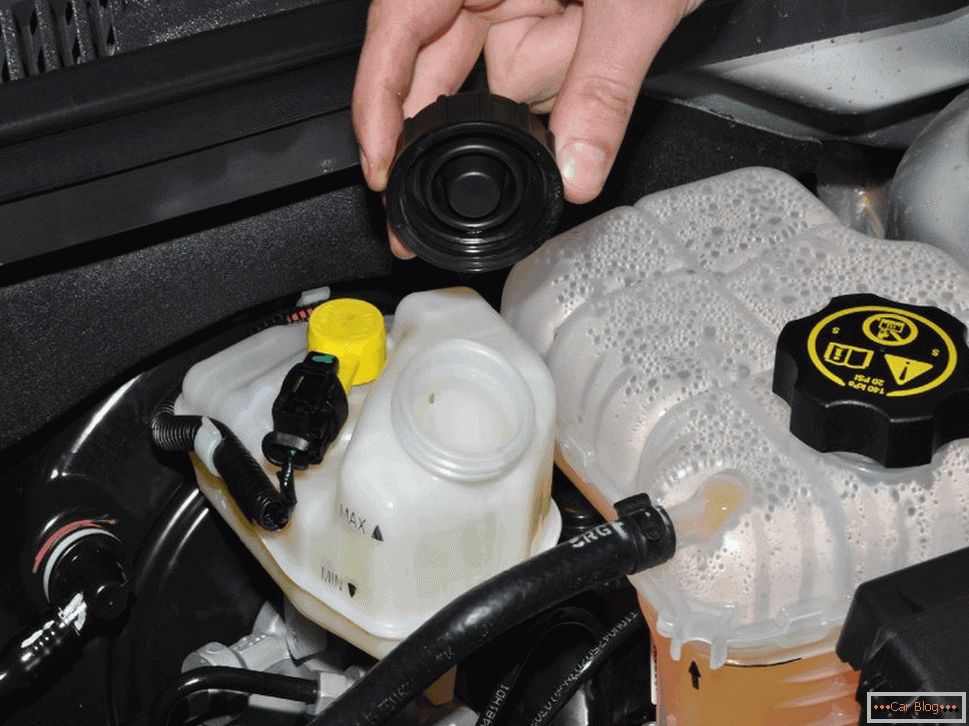
Serviceable braking system - your security plog
Therefore, it is important not only to comply with the recommended replacement time, but also to know what kind of brake fluid is permissible to fill in the brake system of the car.
The purpose of this article is to provide the reader with basic theoretical knowledge of brake fluid, its classification and varieties, as well as to acquaint motorists with a rating of the best TJ, depending on price criteria.
Brake Fluid Classification
If we talk about international standards, the most commonly used and generally accepted standard is DOT. Most of the various tests and independent studies are primarily guided by this very classification. In accordance with it, each brand and model of brake fluid has a tolerance class, which in the marking is indicated by the corresponding number after the abbreviation of the standard. We can assume that the class of DOT is the very first criterion that should be taken into account when choosing a brake fluid.
Consider all currently used tolerance classes:
- DOT 3 means that glycolic-based substances are taken as the basis for the manufacture of brake fluid. At the same time, the boiling temperature for DOT 3 is 2200º С for “dry” TJ and 1500º С - for “wet”. It is worth noting that the third class is characterized by a high degree of aggressiveness to many varieties of paints and varnishes.
- DOT 4 is a liquid, also manufactured on the basis of a glycolic base, but with the inclusion of additives that have good lubricating and anti-corrosion properties in the package. The boiling temperature for the fourth class is 2400 and 1600 degrees for the "dry" and "wet" TJ, respectively. As in the previous case, it may cause damage to the car paintwork.
- Three modifications of the fourth tolerance class are also common - DOT 4.5, DOT 4 SUPER, and also DOT 4+. Their distinctive feature is a higher boiling threshold (2600 º C and 1800 º C, respectively). All other physico-chemical properties are identical to the parent class.
- DOT 5 is a tolerance class that describes silicone-based fluids. They have an even higher boiling point (for “dry” TJ - 2800º С, for “wet” - 1800º С). In contrast to the lower grades, the “five” is neutral to all varieties of paints and varnishes and is absolutely non-hygroscopic.
- DOT 5.1 - a modified version of the classes DOT 4/5, whose boiling point is 2700º С and 1800º С.
As you already understood, DOT classification describes the composition of brake fluid rather superficially, so it makes sense to dwell on this point in more detail.
As a rule, 95 - 98% of TZH - this is the basis, the remaining few percent fall on various additives and modifiers. The base is also in most cases multi-component. There are three large groups of basic compounds:
- mineral bases;
- silicone;
- glycol base formulations.
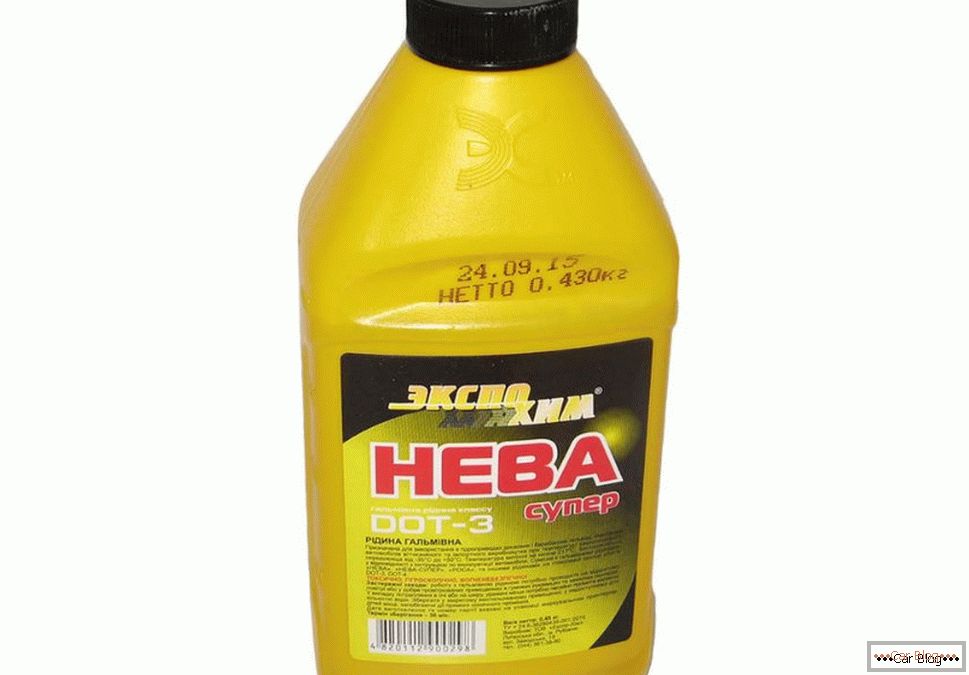
Dot 3 on glycoline bases
Mineral base
Mineral blends are based on the use of castor oil (a required component) and various alcohols in different proportions. So, when using butyl alcohol such a liquid is called BSK, amyl alcohol is called ASC. The peculiarity of mineral brake fluids are their weak viscosity-temperature characteristics: pour point - minus 30 - 40 degrees, boiling point - plus 115 degrees.
However, many other properties of such compositions are fully commendable: they are good protective parameters, almost absolute non-hygroscopicity, neutrality with respect to car paint and varnish coatings, good lubricating properties.
At the same time, mineral-based formulations are not subject to certification, since they are incompatible with international standards, have an unacceptably low boiling point, which makes it impossible to use them in vehicles with disc brakes, and lose their fluidity at a relatively small frost (-20º С).
Currently, the use of TJ on a mineral basis is limited to models of old cars, in which brake hoses and tubes have an increased diameter, which partially solves the problem of increasing viscosity at negative temperatures ..
Гликолевые смеси
Glycolic (boron-containing, polyglycolic) esters are used as the basis for such liquids, and corrosion inhibitors are used as additives / additives.
Possessing a sufficiently high boiling point, glycolic TJ can be used on vehicles with disc brakes, and the ability not to lose fluidity in extreme cold makes it very popular in our country.
One of the most noticeable drawbacks of glycol mixtures is their low hygroscopicity, which to a certain extent eliminates the good viscosity-temperature characteristics. It is not recommended to use such liquids on old machines due to the large amount of rubber parts that will quickly become unusable.
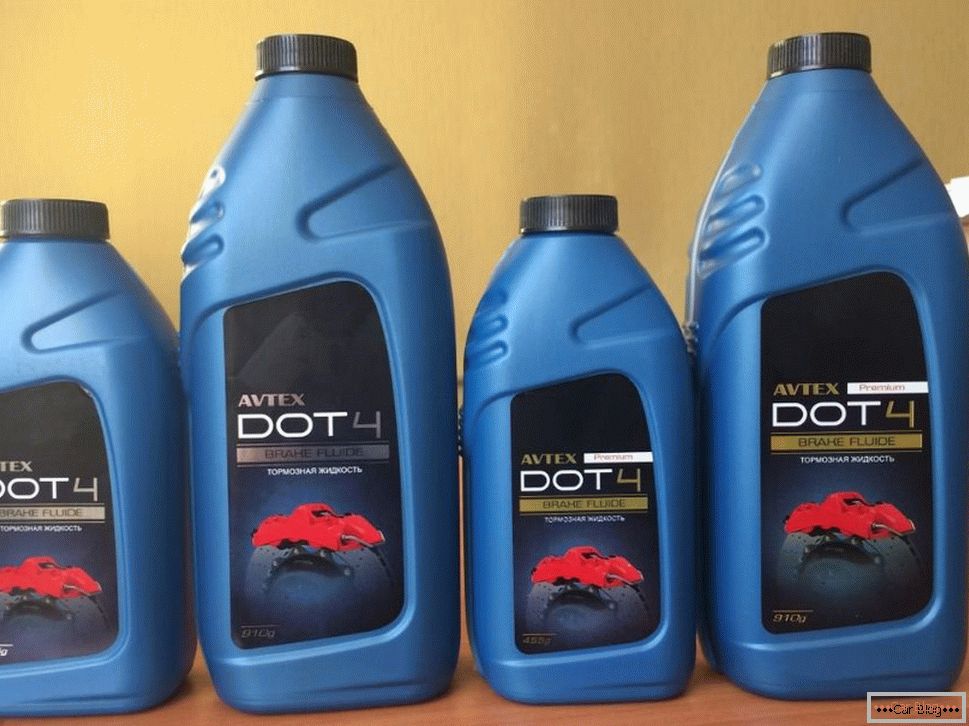
Dot 4 glycolic base + additives
Silicone fluids
Mixtures based on polymer components (mainly silicone) have appeared relatively recently. They have a viscosity that is practically independent of temperature factor, inert to paintwork materials, do not lose their properties in a wide temperature range (from –110 to + 340 ° С), and have the ability not to adsorb moisture. Do not contribute to the corrosion of metal parts of the brake system.
Their only drawback is unsatisfactory lubricating properties.
Most often, these brake fluids are used by those drivers who prefer extreme driving style.
Brake fluid selection criteria
Experts identify the following characteristics that have a significant impact on the choice of TJ:
- boiling temperature;
- impact on rubber parts;
- corrosivity;
- viscosity;
- hygroscopicity;
- lubricating characteristics.
How to choose a suitable brake fluid for your car, taking into account these criteria, depends on the specific car (or rather, the characteristics of the brake system) and the conditions in which it will be used.
Boiling temperature
When the vehicle is braked, its kinetic energy is transformed into heat energy, and the brake pads along with the disc are the most susceptible to heating units. Through the block, the heat spreads to the caliper, which eventually heats up the brake fluid. If the heating temperature is close to the boiling point of the liquid, it will cease to perform its functions properly, which will manifest itself as a drop in braking efficiency, and in the worst case, a failure of the brake pedal.
In addition, the boiling point indicator TJ characterizes its total resource. Due to the nature of its physicochemical properties, the brake fluid has the ability to absorb moisture coming from the lack of tightness of connections from the outside, which also reduces this figure. If, due to saturation with water, the boiling point drops to a critical level, further operation of the car can cause serious trouble. Therefore, the concept of the boiling point of a “dry” and “wet” liquid is introduced, and the second indicator is even more important than the theoretical first one. It has been proven that over several years the amount of water in the TJ increases by 2–5%. If you are in doubt what kind of brake fluid to pour into the car - choose, other things being equal, having higher boiling points.
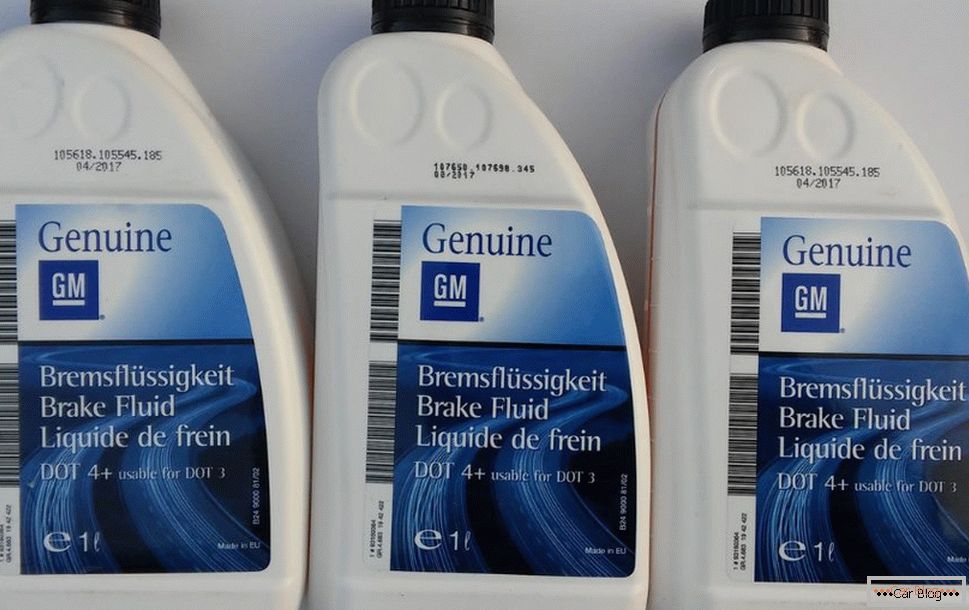
Dot 4+ has a higher boiling point
The impact of TJ on rubber parts
Many brake systems are composed of rubber sealing elements. Brake fluid should not affect these seals. Their swelling, loss of strength, change in elasticity or size reduction is permissible, but to a certain extent.
If the cuffs are strongly swollen, this will create additional obstacles for the reciprocating movement of the pistons in the brake cylinders, which threatens to slow down the car for a long time after braking has been completed. And this - quick wear pads, increased fuel consumption and loss of accelerating dynamics.
More significant trouble will occur if the rubber cuff shrinks. In this case, the risk of a leakage of the joint and leakage of the TJ increases, which threatens to reduce the effectiveness of braking.
Corrosion activity
When choosing brake fluid, you should pay attention to this indicator, which is also an important cause of brake failure. The fact is that the formation of a corrosive layer on the metal parts of the brake system threatens, first of all, by sticking the pistons of the brake cylinder, and secondly, it contributes to the rapid wear of the cuffs, which will have to work with corroded surface. In both cases, the braking performance will gradually decrease until the hydraulic actuator stops responding to the brake pedal at all.
It should be noted that corrosivity is largely dependent on the boiling point. The higher the boiling temperature of the mixture, the more hygroscopic it is. And the more moisture gets into the TJ, the worse for metal parts. Such is the inverse relationship.
Viscosity
This parameter, which characterizes the ability of the TZh to be pumped through the brake system at low temperatures, affects the correct operation of the brakes during the winter period. However, the increase in fluidity threatens no less troubles, and in summer, with intensive braking, the temperature of the liquid in the main tank can rise to 200 ° C and above.
Brake fluid with increased viscosity will worsen the feedback between braking and driver action, which is especially unpleasant for cars equipped with ABS. Full or partial freezing of the TZH will block the operation of the brake system. Too liquid mixture increases the risk of leaks.
So the general rule is simple - choose a composition with the largest possible temperature range.
Hygroscopicity
We have already casually mentioned this parameter - this is the ability of polyglycolic formulations to absorb moisture from the outside. Usually this happens through the compensation hole located in the tank lid.
Ability to accumulate condensate  Discounts for new cars! Profitable loan from 9.9% installments 0%
Discounts for new cars! Profitable loan from 9.9% installments 0%  adom.ru is largely due to temperature differences between the internal and external environments (the fogging of car windows is a very significant example of such an effect). Increasing the concentration of water in the brake fluid reduces the boiling point, increases the freezing point, impairs the lubricating properties of the fluid and accelerates the corrosion processes in the brake system.
adom.ru is largely due to temperature differences between the internal and external environments (the fogging of car windows is a very significant example of such an effect). Increasing the concentration of water in the brake fluid reduces the boiling point, increases the freezing point, impairs the lubricating properties of the fluid and accelerates the corrosion processes in the brake system.
Every 2 - 3% of water in the brake system reduces the boiling point by 60 - 80 degrees. This means that during intensive braking, a DOT-4 class liquid will boil at 160 degrees, although in the “dry” state this figure is about 230 degrees.
High hygroscopicity ultimately leads to the same disastrous consequences as the ingress of air into the hydraulic system: braking efficiency drops sharply.
Lubricating properties
This parameter, although not as critical, can also affect the performance of the braking system. The higher this characteristic, the lower the rate of wear of the brake cylinders, as well as the ABS unit, if any. According to this indicator, the best results are DOT5 class liquids with a silicone base. They have good characteristics and hygroscopicity, and the boiling point, so that such TJ would be the best choice for apologists of active driving.

Dot 5 must not be mixed with other brake systems.
Brake Fluid Compatibility
Starting to replace the brake fluid, you must first find out what type was poured into the system before, because there are certain requirements regarding the compatibility of different classes and compositions. In general, these recommendations are simple, and remembering them will not be difficult:
- TJ classes DOT-3, DOT-5.1, DOT-4 are mutually compatible;
- DOT-5 fluids should not be mixed with any other formulations.
The fact is that the first three liquids have the same basis (glycolic), and the composition of impurities and additives is approximately the same, which determines their compatibility (at least, theoretical).
DOT-5 grade liquid uses a silicone base. Mixing polymer components with glycol components can cause chemical reactions to start, which ultimately leads to loss of performance characteristics of the mixed brake fluid.
But it is not for nothing that we mentioned that compatibility between the three above-mentioned classes is rather theoretical than practical. Manufacturers do not always report all the additives used, which can cause incompatibility when mixing different types, both belonging to different DOT tolerance classes, and different manufacturers within the same class.
So the best advice here is one - use brake fluids of one brand. In this case, the mixing of compositions of different types does not threaten any trouble.
Top TJ rating
How to choose the best brake fluid for a particular car, given the above information? The advice here is simple: study the manufacturer's recommendations and try to follow them. However, the range of products of this type is constantly expanding, there are new fluids with improved properties, so the recommendations of automakers are often outdated. We offer you a small rating of the best brake fluids that can be found in the domestic market. For convenience, we have divided all liquids into three categories depending on the price factor (in fairness, we note that focusing exclusively on cost is an approach that is not too correct):
- budget liquids worth up to 200 rubles;
- TZH of the average price range (200 - 500 rubles);
- compositions of premium class (cost from 500 rubles).
TOP 3 budget brake fluids
Felix Brake Fluid.
This brake fluid from the Russian manufacturer, despite the very affordable cost (from 75 rubles), is characterized by acceptable high-temperature properties, which allows its use in many brands of domestic and imported cars. The composition of the liquid included additive - corrosion inhibitor, which ensures long-term preservation of the metal components of the brake system. Available in 0.5 liter containers.
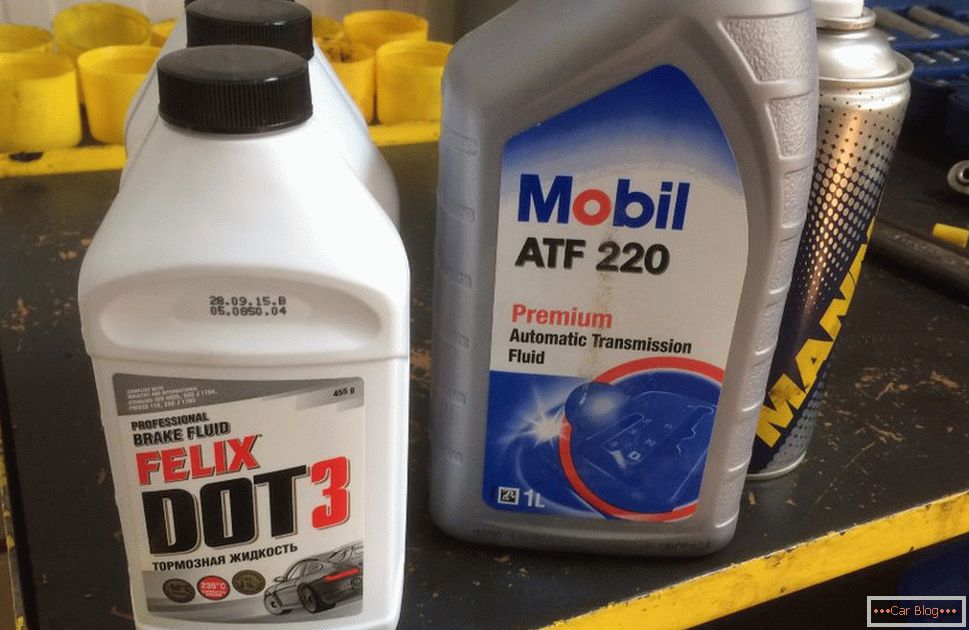
Бюджетная brake fluid Felix Brake Fluid
Temperature characteristics:
- T boiling "dry" liquid - 245 ° C;
- The boiling point of the “wet” liquid is 162 ° C.
Tosol-Sintez Rosa 4
It is considered one of the best compositions of the budget category. The name of this domestic brand is a household name in relation to cooling fluids, but the compositions for the brake system are of very good quality, allowing them to be used for a wide range of domestic and foreign cars. The liquid produced in 0.5-liter containers (cost from 105 rubles) is inert to the metal and rubber components of the brake system and is characterized by good thermal stability and viscosity.
Temperature characteristics:
- T boiling "dry" liquid - 232 ° C;
- The boiling point of the “wet” liquid is 152 ° C.
Luxe Brake Fluid
Another domestic brand of budget class, the main target audience of which are cars equipped with brake systems with disc and drum type mechanisms. The basis is polyalkylene glycols with a package of optimal additives that guarantee effective inhibition. Packaging volume of 0.9 liters. costs from 155 rubles.
Temperature characteristics:
- T boil "dry" liquid - 230 ° C;
- The boiling point of the “wet” liquid is 155 ° C.
TOP-3 TZH mid-range
Bosch Brake Fluid
Although the German brand needs no introduction, Brake Fluid brake mix is produced in an Italian factory. It is characterized by a fairly high boiling point and, according to the manufacturer, can be used for two years. It is optimal for modern cars equipped with disc brakes with a circular contour. It is delivered in a half-liter container costing from 230 rubles.
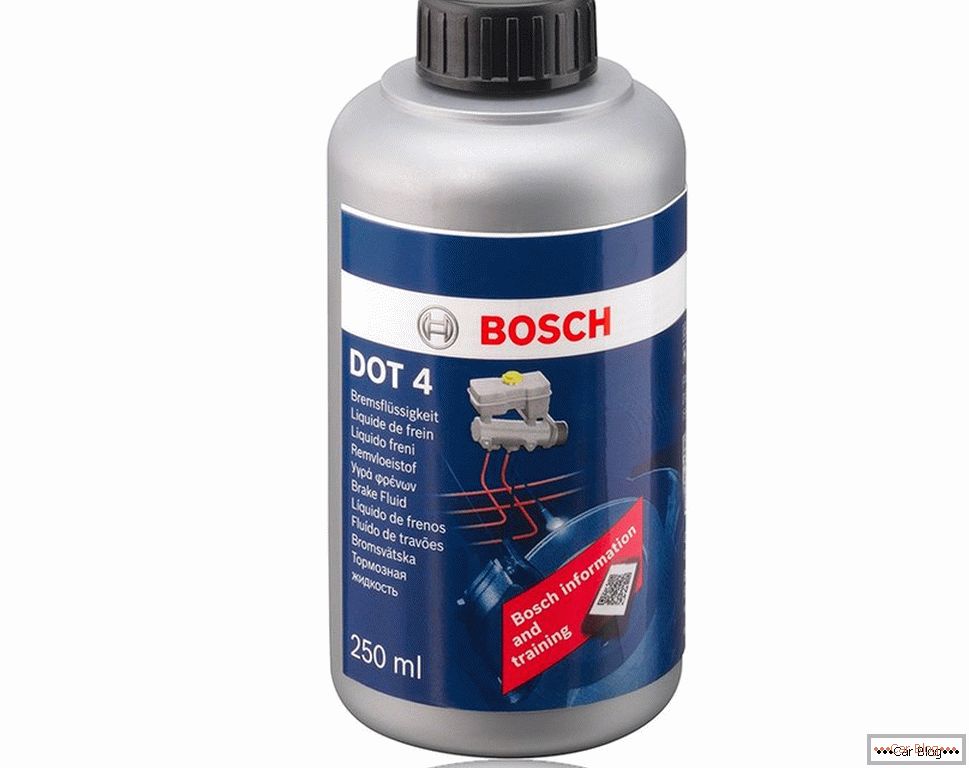
Italian brake mix Brake Fluid
Temperature characteristics:
- T boil "dry" liquid - 230 ° C;
- The boiling point of the “wet” liquid is 155 ° C.
Castrol Brake Fluid
Another representative of the famous British brand specializing in the production of auto chemicals. It has a complex saturated composition (boron esters, polyalkylene glycol ethers, additives and inhibitors). It is characterized by excellent protection against corrosion of parts of the brake system and the formation of steam plugs in the pipes. The high boiling point allows the use of TJ drivers who prefer aggressive driving. The cost of a 0.5-liter capacity is quite high - from 375 rubles.
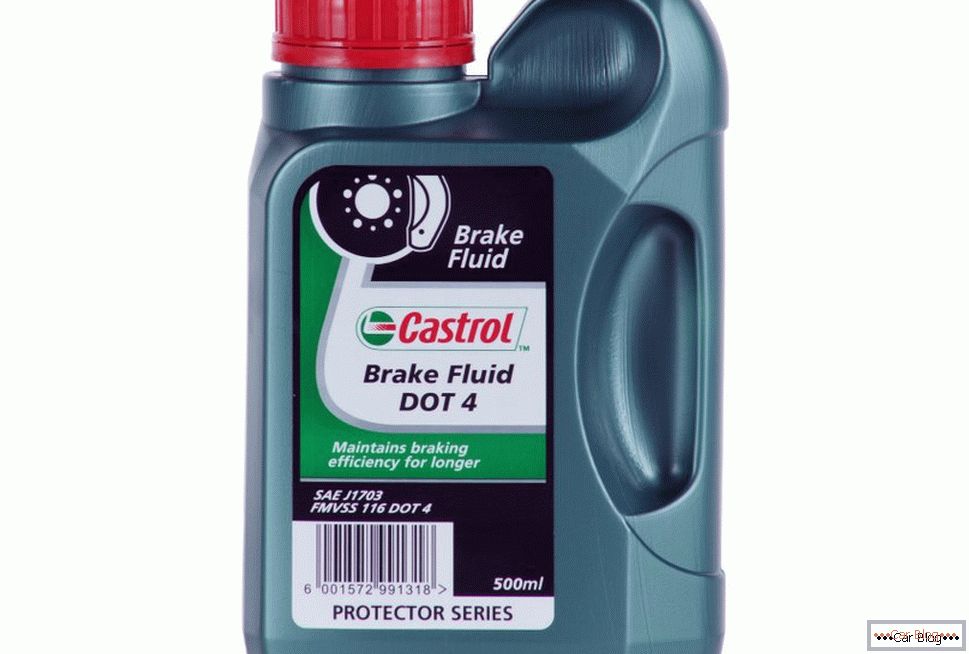
Compound Castrol Brake Fluid Brake Fluid
Temperature characteristics:
- T boil "dry" liquid - 250 ° C;
- The boiling point of the “wet” liquid is 155 ° C.
Bosch Brake Fluid HP
Liquid with an HP index is characterized by a reduced viscosity index. Its potential scope of use is the latest generation of cars, equipped with brake systems, in which pressure is controlled by electronics, and incorporating ESP / ASR / ABS systems. Provides optimal rate of change of pressure in the system. Delivered in a liter container, it costs from 435 rubles.
Temperature characteristics:
- T boil "dry" liquid - 260 ° C;
- T boiling "wet" liquid - 170 ° C.
TOP-3 Premium Class TJ
Moto DOT 3/4 / 5.1
The French manufacturer of automobile chemicals is well known to domestic motorists for motor oils. But in the company's assortment there are also brake blends, focused on use in vehicles equipped with ABS. One of the highest boiling points provides the longest possible life. TJ is distinguished by its neutrality with respect to rubber parts of the brake system and excellent anti-corrosion characteristics. Available in containers with a capacity of 0.5 liters, which costs from 535 rubles.
Temperature characteristics:
- T boiling "dry" liquid - 272 ° C;
- The boiling point of the “wet” liquid is 185 ° C.
Elf Frelub 650
A well-known French manufacturer of high-quality auto chemical goods offers premium-class brake fluid priced from 575 rubles per liter capacity, designed for use in vehicles operated in active or extreme conditions. It is characterized by excellent fluidity in conditions of negative temperatures and record indicators of the boiling temperature of TJ, which guarantees the absence of steam plugs in the braking system during intensive braking. The hygroscopicity of the proposed composition is minimal. Liquid is neutral to rubber and metal (steel, aluminum, copper, tin, cast iron, brass) components. Evaporation of the liquid is negligibly small, the degree of formation of deposits is negligible.

Premium fluid
Temperature characteristics:
- T boil "dry" fluid - 280 ° C;
- T boiling "wet" liquid - 170 ° C.
TCL DOT 4
The main disadvantage of brake fluid from the Land of the Rising Sun is the high price - you need to pay 580 rubles per liter capacity. But if we talk about quality, here Japanese TJ is out of competition. Differs in good viscosity in the extensive temperature range, fine anticorrosive properties, ability not to influence epiploons and rubber cuffs. An ideal choice for modern cars equipped with disc brakes.
Temperature characteristics:
- T boil "dry" liquid - 230 ° C;
- T boiling "wet" liquid - 160 ° C.
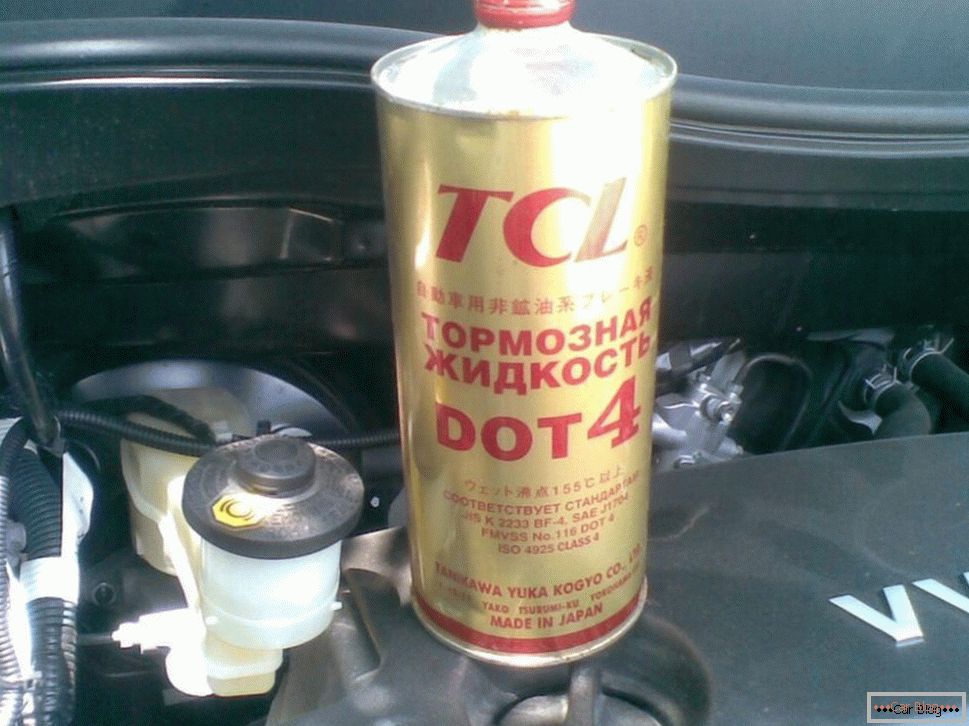
This brake fluid has one disadvantage - high price.
Hopefully, our rating will become your guideline when choosing brake fluid for your car. At the same time, we are aware that the above information may become obsolete with time. In any case, after examining the rating and characteristics of the characteristics of the TJ, you will be able to independently determine in future how the specific composition is suitable for your brake system.

